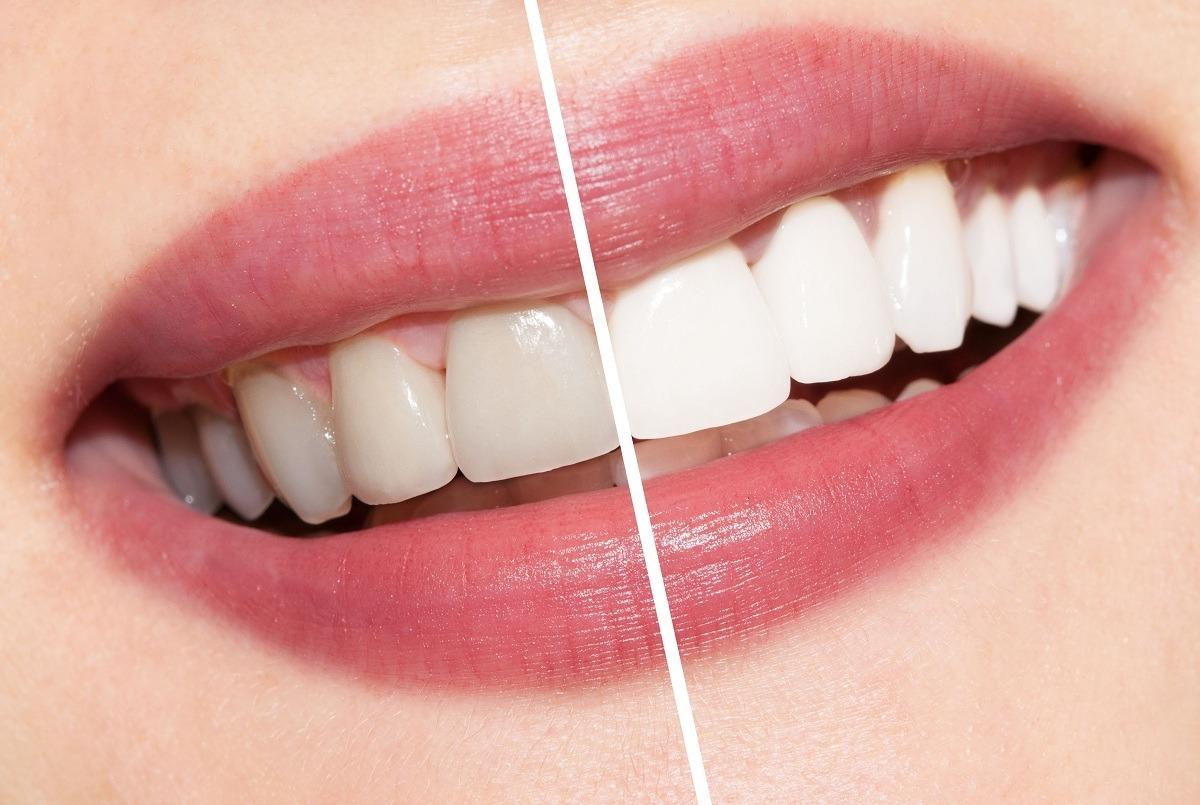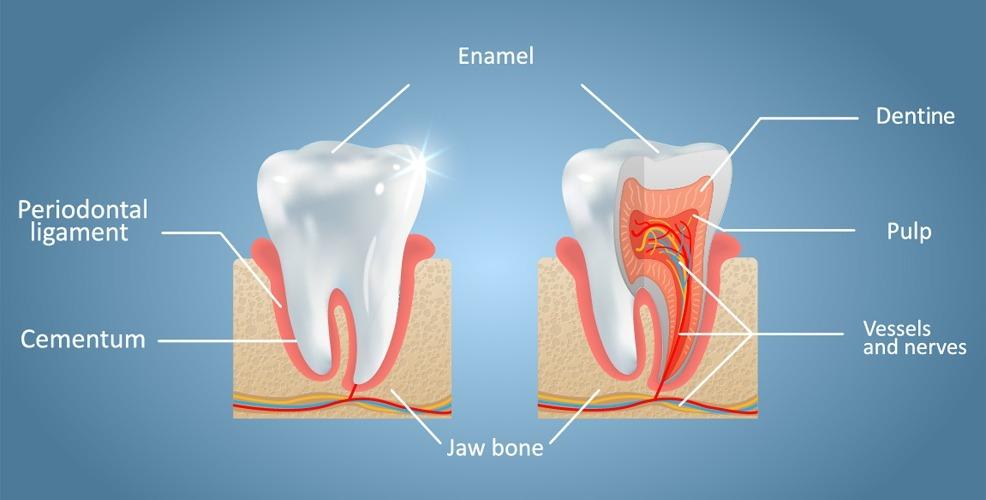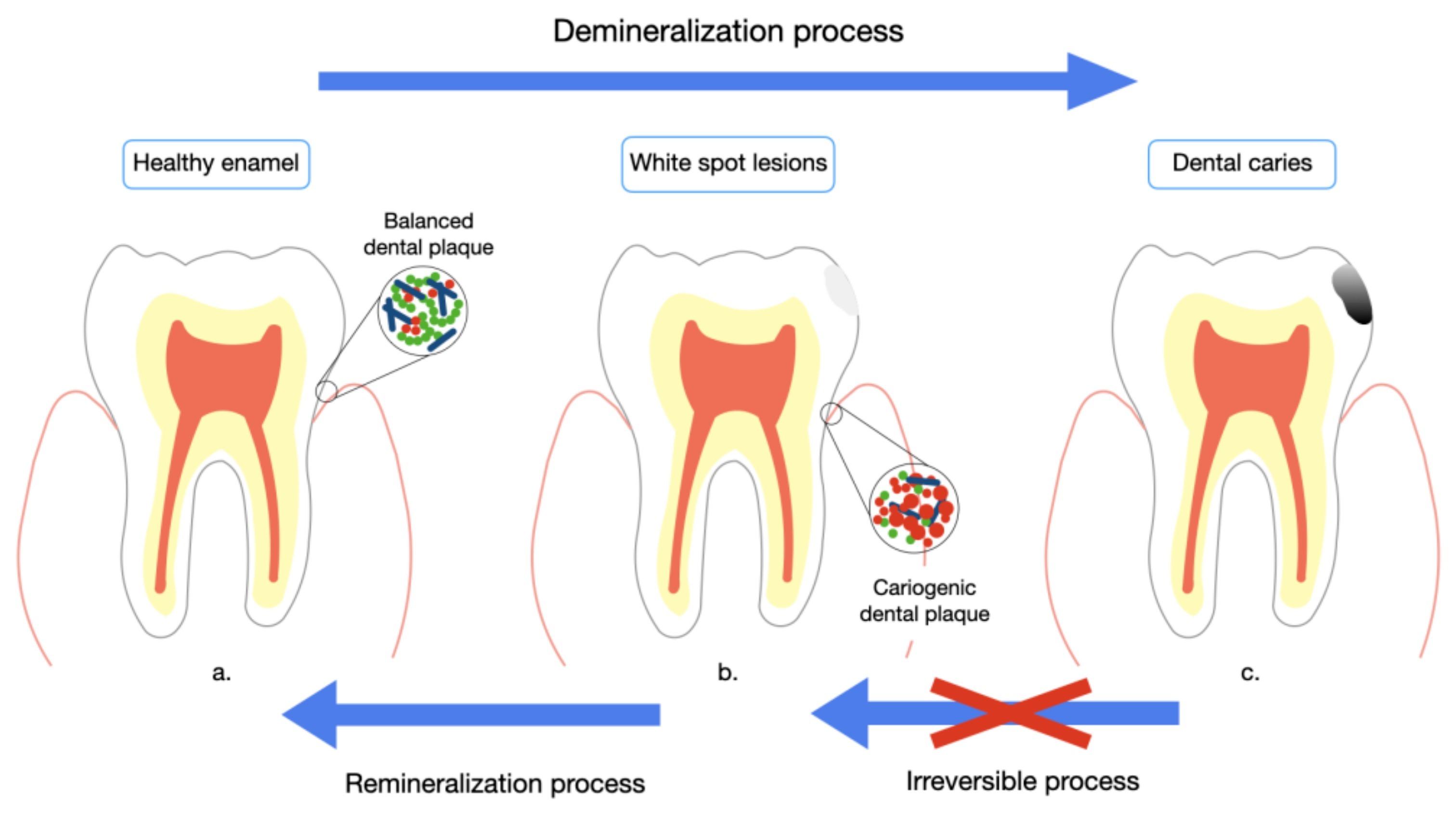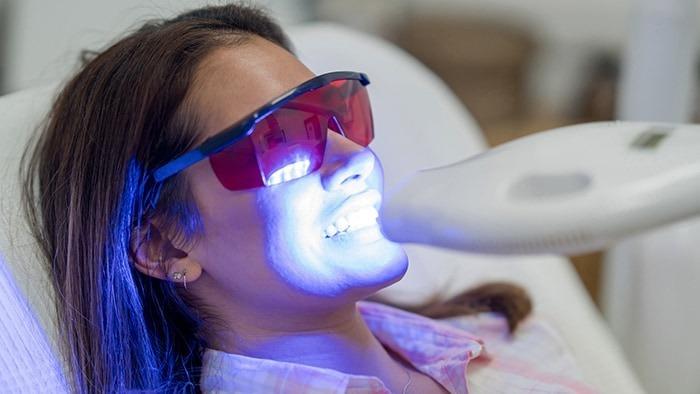
Is Teeth Whitening Safe for Your Enamel? What Dentists Want You to Know
A bright and white smile is universally associated with confidence, beauty, and good health. In modern society, where appearances play a significant role in social interactions, professional life, and even self-esteem, many people are turning to teeth whitening as a simple solution to enhance their smile. With the availability of both professional treatments and over-the-counter products, achieving a dazzling smile has become more convenient than ever.
Teeth whitening is widely sought for various reasons. Some individuals want to reverse years of staining caused by coffee, tea, red wine, or tobacco use. In contrast, others aim to restore their natural tooth color after aging or medication-related discoloration. The convenience and visible results make whitening an attractive cosmetic procedure.
However, while teeth whitening can deliver impressive aesthetic results, it is essential to consider the health of your enamel. Enamel is the protective outer layer of your teeth, and any damage to it can lead to sensitivity, cavities, or long-term dental problems. Understanding the interaction between whitening treatments and enamel is critical for making safe and informed choices.
The Basics of Enamel: Your Teeth’s Protective Layer

What is Enamel?
Enamel is the hardest tissue in the human body, even stronger than bones. It covers the outermost layer of the teeth, forming a shield that protects the underlying dentin and pulp from physical, chemical, and bacterial damage. Enamel is composed primarily of minerals, mostly hydroxyapatite, giving it its strength and resilience. Despite its hardness, enamel is non-living and cannot repair itself once damaged.
Its primary function is to provide a durable surface for chewing, biting, and grinding food while protecting the inner structures of the teeth from decay and injury. Enamel also plays a role in aesthetics; intact enamel reflects light well, contributing to the natural brightness and shine of your teeth.
Damage or thinning of enamel can have long-term consequences. Once enamel is compromised, the teeth become more susceptible to sensitivity, decay, and discoloration. Maintaining enamel health is, therefore, essential for both oral function and appearance.
Role of Enamel in Oral Health
Enamel serves as the first line of defense against tooth decay and sensitivity. It protects the dentin and pulp, which contain nerves and blood vessels, from bacterial invasion and physical trauma. Strong enamel ensures that teeth can endure the forces of biting and chewing without cracking or wearing down prematurely.
Moreover, enamel helps maintain the appearance of your teeth. Smooth and healthy enamel allows light to reflect uniformly, giving teeth a natural shine. When enamel wears away or becomes damaged, the underlying yellowish dentin may show through, making teeth appear discolored or dull. Healthy enamel is therefore vital not only for oral health but also for maintaining an attractive smile.
Factors That Weaken Enamel
Several factors contribute to enamel weakening over time. Acidic foods and beverages such as citrus fruits, sodas, and vinegar can gradually erode the enamel surface. Poor oral hygiene encourages plaque buildup, allowing bacteria to produce acids that further degrade enamel. Additionally, habits like teeth grinding, nail-biting, and using teeth as tools can physically wear down enamel.
Aging naturally thins enamel, making it more susceptible to sensitivity and discoloration. Frequent use of whitening products without proper guidance can also contribute to enamel erosion. It is essential to recognize these factors and address them to maintain enamel strength and overall dental health.
How Teeth Whitening Works
Types of Teeth Whitening
Teeth whitening methods vary in intensity, application, and duration. Professional in-office treatments use high-concentration bleaching agents applied by dentists. These treatments produce fast and effective results under controlled conditions, minimizing risks to enamel. Many patients achieve noticeable results in a single session.
At-home whitening kits include over-the-counter strips, gels, and trays, often containing lower concentrations of bleaching agents like hydrogen peroxide or carbamide peroxide. While these products are convenient and affordable, their slower action requires consistent use over days or weeks to achieve results.
Natural remedies such as baking soda, activated charcoal, or oil pulling are also popular. These methods are generally milder but can be abrasive if overused. While they may remove surface stains, excessive use can lead to enamel wear, highlighting the importance of moderation and care.
Active Ingredients
The most common active ingredients in whitening products are hydrogen peroxide and carbamide peroxide. Hydrogen peroxide penetrates the enamel and dentin to break down stain molecules, while carbamide peroxide slowly converts to hydrogen peroxide over time, providing a milder and longer-lasting whitening effect.
The concentration of these agents directly influences both effectiveness and safety. Professional treatments use higher concentrations safely under supervision, whereas at-home products contain lower concentrations to reduce the risk of enamel damage. Understanding these ingredients helps users make informed choices and avoid overuse or misuse.
Mechanism of Whitening and Effect on Stains
Whitening works through oxidation, breaking down stain molecules embedded in enamel and dentin. Foods, beverages, and lifestyle habits deposit chromogens, pigmented compounds on the tooth surface. Oxygen molecules released by bleaching agents react with these chromogens, fragmenting them into smaller, less visible particles.
While effective at removing external and internal stains, the whitening process must be carefully controlled. Overuse, prolonged exposure, or high concentrations can weaken enamel, increasing sensitivity and vulnerability to decay. Following professional guidance ensures a balance between cosmetic improvement and enamel safety.
Potential Risks to Enamel

Enamel Erosion and Sensitivity
Improper whitening techniques can erode enamel, exposing the softer dentin underneath. This can result in tooth sensitivity, discomfort, and a higher risk of decay. Sensitivity may manifest as pain or discomfort when consuming hot, cold, sweet, or acidic foods and beverages.
Temporary enamel weakening may partially recover with fluoride or remineralizing products, but severe erosion is irreversible. Individuals with naturally thin enamel or pre-existing dental issues face a higher risk. Consulting a dentist before whitening is critical to minimize potential harm.
Overuse or Misuse of Whitening Products
Over-the-counter whitening kits offer convenience but are prone to misuse. Common mistakes include applying high concentrations of bleaching agents too frequently, leaving trays on for longer than recommended, or combining multiple whitening methods simultaneously. These practices can damage enamel, cause uneven whitening, and irritate gums.
Adhering to product instructions and using dentist-supervised treatments are essential to minimize enamel damage. Professional guidance ensures correct concentrations, application methods, and treatment intervals for optimal results.
Interaction with Existing Dental Issues
Teeth with cavities, cracks, or exposed dentin are more vulnerable to whitening damage. Bleaching agents can penetrate weakened areas, leading to pain, increased sensitivity, and further deterioration. Individuals with gum disease, fillings, crowns, or veneers should consult a dentist before whitening to ensure safety. A dentist can evaluate enamel thickness, identify risk factors, and recommend treatments tailored to protect enamel while achieving cosmetic goals.
Advantages and Potential Drawbacks
Cosmetic Benefits
Teeth whitening provides immediate aesthetic improvements, making teeth look brighter, cleaner, and more youthful. Many people experience a confidence boost, which can enhance social interactions and overall self-esteem. Whitening treatments are effective at removing stains caused by coffee, tea, wine, tobacco, and aging, leading to a uniform and appealing tooth color.
These cosmetic benefits are often the primary motivation for whitening. When used correctly and in moderation, whitening treatments offer significant visual improvements with minimal risk to enamel.
Long-term Dental Health Considerations
Although whitening is generally safe, repeated or aggressive treatments can compromise enamel integrity over time. Weak enamel increases susceptibility to cavities, sensitivity, and structural damage. Maintaining enamel health should remain the priority, even when pursuing cosmetic procedures.
Regular dental check-ups can detect early signs of enamel erosion and help guide safe whitening practices. By combining professional advice with responsible use, individuals can enjoy the benefits of whitening without compromising long-term dental health.
When Whitening is Safe and Effective
Whitening is safest for individuals with healthy teeth, no cavities, intact enamel, and no underlying dental problems. Professional guidance ensures the use of appropriate whitening agents, concentrations, and application methods.
Patients should communicate any sensitivity, enamel concerns, or pre-existing conditions with their dentist. This allows the dentist to tailor treatments for maximum safety and effectiveness, ensuring cosmetic goals are met without harming enamel.
Tips to Protect Your Enamel During Whitening
Choosing the Right Whitening Product
Selecting the correct whitening product is crucial for protecting your enamel. Not all whitening products are created equal; some are harsh and can damage teeth over time.
- Look for clinically tested products: Whitening products approved or recommended by dental associations or certified by a dentist are generally safer. They undergo testing to ensure enamel safety while still delivering visible results.
- Check peroxide concentration: Many whitening gels and strips contain hydrogen peroxide or carbamide peroxide. Products with low to moderate concentrations (typically 3–10% hydrogen peroxide or 10–20% carbamide peroxide) are effective yet gentle on enamel. High concentrations can cause sensitivity or microscopic enamel erosion.
- Avoid abrasive powders or pastes: Whitening toothpastes with harsh abrasives or “whitening powders” can scratch the enamel surface. Over time, this makes teeth more prone to staining and decay. Instead, choose formulas labeled “enamel-safe” or “non-abrasive.”
- Follow product instructions carefully: Overusing whitening gels, strips, or trays, even safe ones, can irritate enamel and gums. Always adhere to the recommended duration and frequency.
Limiting Frequency of Whitening
Even enamel-safe products can harm teeth if used too often. Frequent bleaching or whitening treatments can thin enamel, making teeth more sensitive and vulnerable to decay.
- Spacing treatments: For most people, it’s sufficient to whiten teeth once every six months to a year. This interval allows enamel to recover and reduces the cumulative risk of damage.
- Monitor your teeth: If you experience increased sensitivity, discoloration, or roughness, it may be a sign that whitening is too frequent. Pause treatments until your dentist evaluates your enamel health.
- Avoid stacking treatments: Using multiple whitening methods at once, such as whitening toothpaste along with strips or gels, may intensify enamel wear. Stick to one method at a time.
Maintaining Oral Hygiene
Strong oral hygiene plays a vital role in protecting enamel, especially when undergoing whitening treatments.
- Brush correctly: Use a soft-bristled toothbrush and gentle strokes to avoid wearing down enamel. Hard brushing combined with whitening products can accelerate erosion.
- Floss daily: Removing plaque between teeth prevents cavities and gum disease, which can worsen if enamel is weakened.
- Use fluoride toothpaste or rinses: Fluoride strengthens enamel, making it more resistant to acid erosion from whitening treatments or dietary acids.
- Avoid acidic or harsh mouthwashes: While antibacterial rinses are useful, those with high alcohol or strong acids can compound enamel wear. Opt for neutral, fluoride-containing rinses.
Consulting a Dental Professional
Professional guidance is the safest way to whiten teeth while protecting enamel. Dentists can evaluate your teeth, identify risks, and recommend personalized approaches.
- Enamel assessment: Dentists can check for enamel thinning, cracks, or sensitivity before starting any whitening treatment.
- Customized whitening plans: Based on your dental health, a dentist may suggest professional whitening, at-home kits, or a combination that minimizes enamel risk.
- Monitor results safely: Regular checkups ensure that whitening progresses without compromising enamel, and dentists can intervene early if problems arise.
Alternative Safe Whitening Methods

Professional Cleaning and Polishing
- Dental cleanings safely remove surface stains caused by coffee, tea, or tobacco.
- Polishing smooths enamel, giving teeth a bright appearance without using bleaching chemicals.
- These treatments maintain oral health by reducing plaque buildup and lowering cavity risk.
Enamel-Safe Whitening Toothpaste
- Contains mild polishing agents or low concentrations of peroxide.
- Gradually removes stains while maintaining enamel strength.
- Ideal for people with sensitive teeth or those seeking gradual whitening without aggressive chemical treatments.
Lifestyle Changes
- Avoid stain-causing foods and drinks: Coffee, tea, red wine, and dark berries can discolor teeth over time.
- Quit smoking or using tobacco products: Tobacco causes stubborn stains and can weaken enamel.
- Nutrition for enamel health: Include calcium-rich foods (milk, cheese, yogurt) and vitamin D (sun exposure, fortified foods) to strengthen enamel.
- Hydration and saliva production: Drink plenty of water. Saliva neutralizes acids and helps protect enamel naturally.
Additional Tips for Enamel Protection During Whitening
- Use a straw: When drinking acidic beverages like soda, juice, or coffee, use a straw to minimize contact with teeth.
- Wait after acidic foods: Avoid whitening immediately after consuming acidic foods or drinks, as enamel is temporarily softened and more vulnerable.
- Avoid DIY whitening remedies: Home remedies like lemon juice, baking soda, or charcoal can severely damage enamel despite their popularity.
Conclusion
Teeth whitening can dramatically enhance your smile, boosting confidence and overall appearance. However, achieving a brighter smile should never come at the expense of your enamel the hard, protective layer that safeguards your teeth from decay, sensitivity, and damage. Enamel health is the foundation of long-term oral stability, and compromising it can lead to serious dental problems.
To enjoy safe and effective whitening results, it is essential to choose enamel-friendly products, limit the frequency of treatments, maintain diligent oral hygiene, and seek professional guidance from a dentist. Following these strategies allows individuals to brighten their teeth without risking erosion, sensitivity, or other complications.
Ultimately, a beautiful smile and strong enamel can coexist. By prioritizing enamel protection while pursuing cosmetic improvements, you can achieve a radiant, confident smile that not only looks good but also supports lifelong dental health. Remember: investing in your enamel today ensures a healthy, vibrant smile for years to come.
FAQs About Teeth Whitening and Enamel
1: Does whitening weaken enamel permanently?
No, professional whitening is generally safe. Temporary sensitivity may occur, but permanent enamel damage is rare with proper supervision.
2: Can sensitive teeth be whitened safely?
Yes, specially formulated products for sensitive teeth, under professional guidance, can achieve whitening without discomfort.
3: How long do whitening effects last?
Typically 6–12 months, depending on diet, oral hygiene, and lifestyle habits.
4: Are natural remedies safe?
Some natural methods are safe if used sparingly. Overuse of abrasive substances like baking soda or charcoal can erode enamel.
5: How often should whitening be done?
Professional guidance is recommended every 6–12 months. Overuse increases enamel damage.

